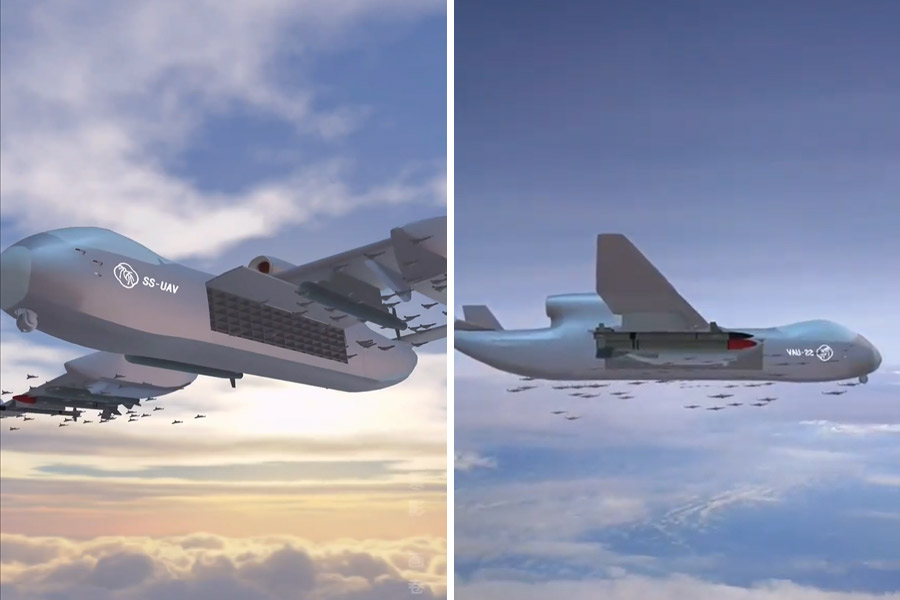In a bold move signalling the next phase in unmanned aerial warfare, China is set to launch its first high-altitude drone carrier, the Jiutian SS-UAV, by the end of June, as reported by South China Morning Post.
According to GB News, the Jiutian will be the world’s first aerial aircraft carrier, capable of deploying hundreds of automated drones in a single mission.
A drone mothership that could transform warfare
Dubbed a "drone mother ship" by Chinese media, the Jiutian is a jet-powered, super-high altitude unmanned aerial vehicle (UAV) with the ability to carry up to 100 smaller drones or loitering munitions, including kamikaze UAVs.
According to reports, the aircraft is designed to release swarms from compartments on both sides of its belly, potentially overwhelming enemy air defences in contested environments.
Developed by China’s state-owned Aviation Industry Corporation of China (AVIC) in collaboration with Shaanxi Unmanned Equipment Technology and Guangzhou Haige Communications, the Jiutian features a modular payload system that allows it to switch roles—from strike support to maritime surveillance, border patrol and disaster response.
At a maximum cruising altitude of 15,000 meters (50,000 feet) and with a range of 7,000 km (4,350 miles), as reported by South China Morning Post, the aircraft can conduct intelligence, surveillance, reconnaissance (ISR) and electronic warfare missions far beyond China’s immediate periphery.
Its 36-hour endurance, 16-ton maximum take-off weight and 25-meter wingspan make it comparable in size and ambition to the RQ-4 Global Hawk, but with the added ability to launch strikes—a feature absent in the US platform.
Tactical reach and strategic intent
The Jiutian is expected to be a key asset in China’s effort to project power across the Taiwan Strait, South China Sea and as far as Guam, a US strategic outpost.
According to GB News, analysts believe its swarming capabilities could saturate advanced air defence systems, especially when combined with other PLA aerial or naval assets.
The drone carrier is also seen as a force multiplier in asymmetric warfare scenarios.
While the aircraft’s altitude places it above many medium-range defence systems, experts caution that US and allied systems such as THAAD, Patriot PAC-3, and Aegis BMD are capable of intercepting high-altitude threats, possibly limiting the Jiutian’s survivability in heavily defended airspace.
Nevertheless, Beijing’s $420 million investment into the Jiutian programme, powered entirely by a domestic supply chain, reflects both strategic intent and industrial capability.
Four prototypes were developed within just 18 months—a testament to China’s fast-paced military-industrial advancement, as reported by South China Morning Post.
Military innovation with civilian spin-offs
Unveiled at the 15th Zhuhai Airshow, the Jiutian represents not just a military breakthrough but a leap in modular, AI-enabled UAV design.
In addition to its combat potential, the drone carrier can serve civilian functions such as emergency logistics, high-security transport, maritime policing, search and rescue, and resource protection in complex environments.
Reports suggest that in future iterations, the Jiutian could be deployed from China’s 076-class amphibious assault ships, extending its operational reach into amphibious and naval domains.
A calculated shift in warfare doctrine
The shift toward unmanned assets, epitomised by the Jiutian, signals a strategic recalibration.
According to GB News, in the eyes of global defence observers, the Jiutian is not just a technological marvel—it is a signal of how warfare may be fought in the future, with networked drones leading strikes, gathering intelligence and jamming enemy systems from the stratosphere.


